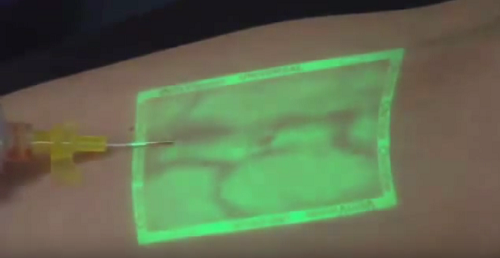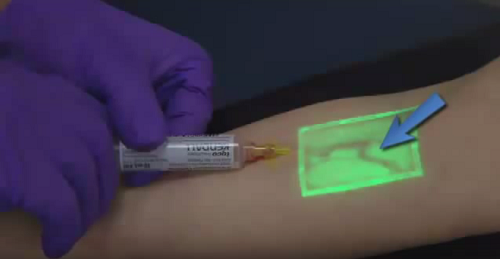There are few things worse than having to get a shot at the doctor’s office — one of those things is having to get pricked multiple times while the medical worker tries to find a vein.
A new technology — aptly referred to as “VeinViewer” — looks to do away with all this poking and prodding, by way of near-infrared light.

VeinViewer uses this level of light to create a digital image of a patient’s vasculature in realtime.
Formally, Christie Medical Holdings, the company behind VeinViewer, refers to the product as a vascular access imaging device that assists clinicians in finding the optimal venipuncture site, and avoid potential stick complications.
To date, VeinViewer has proven to increase first-stick success by up to 100% and decrease medically unnecessary PICC lines by more than 30%.

In addition to creating a digital image of vasculature, if the technology is switched to inverse mode the product can be used to locate elements that could affect the clinician’s choice of access sites; this includes things like bifurcations or valves.
Also worth noting is VeinViewer’s customization range. Per the company’s site: “a clinician can: change the color of the projected image, invert or re-size the image, enhance the image using the fine detail mode, increase or decrease the image brightness or take and store a PNG file of the image. The advantage of all this customization is that the clinician can choose which mode provides the best image for her, and which mode provides the best image of her patient's vasculature.”
Clinicians are able to see blood patterns up to 15mm deep and clinically relevant veins up to 10mm. They’re able to see peripheral veins, bifurcations and valves, and assess in real time the refill / flushing of veins.
Per Christie Medical Holdings, the entire vascular access procedure is now much more improved, including pre-, during, and post-access procedure. It’s operated by AC power or FastSwap Lithium-ion Battery; per the latter, each battery has a continuous runtime of approximately two hours.
Check out the video below to see VeinViewer in action:
Learn more at Christie Medical Holdings site
Advertisement
Learn more about Electronic Products Magazine





